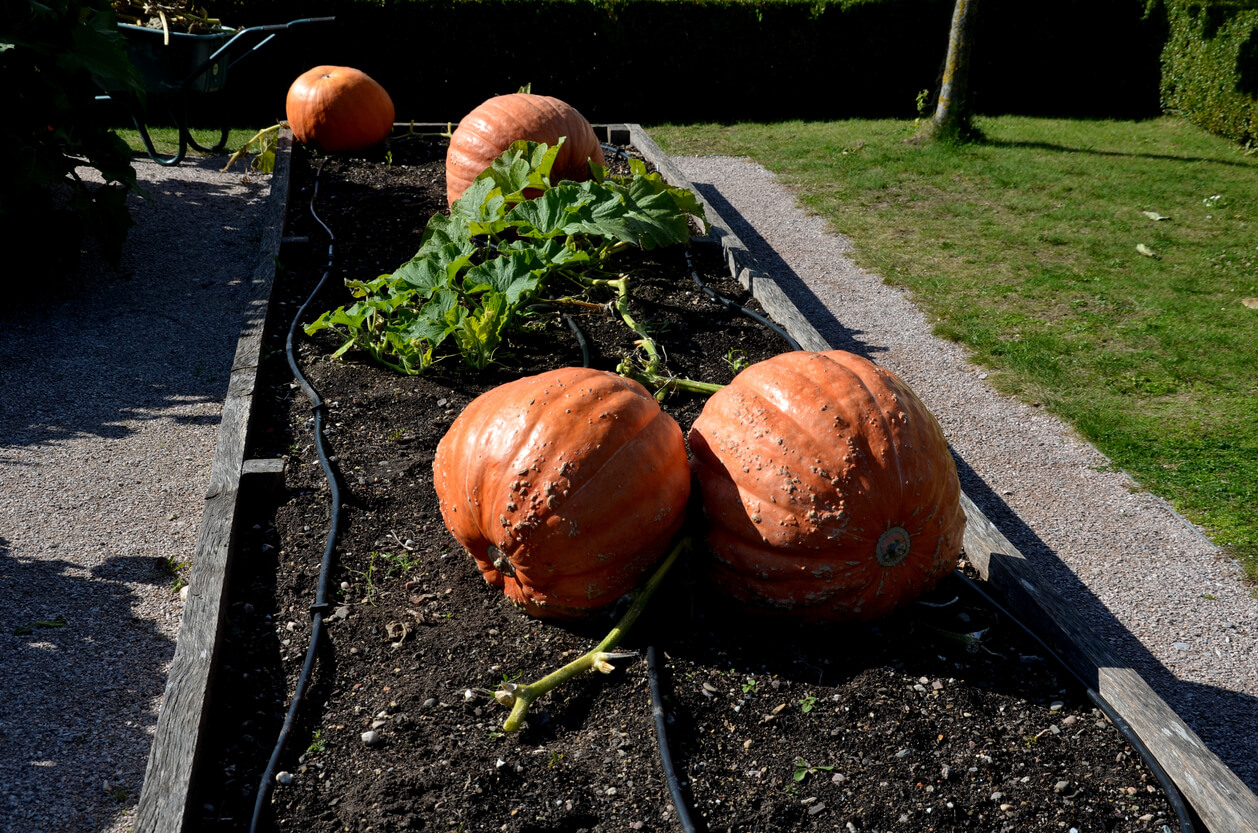
Pumpkins growing in raised bed
Planting
Pumpkins grow better when you plant the seeds directly in the ground. Ideally, you should prepare your pumpkin patch a growing season in advance to give the soil the time it needs for organic matter to permeate your pumpkin mounds.
Pumpkin mounds? Yes. You want to create a little hill for each spot where you plan to plant pumpkins. This applies to any type of pumpkin you grow, from miniature to mammoth. The purpose of the mound is to provide increased drainage and a source of rich organic matter for your pumpkins.
Ideally, you should dig out a square foot of soil a foot down for each mound you plan to plant. After you dig out the hole, layer the bottom with 2 to 4 inches of rich compost or aged manure. Then fill the hole back in (without any weeds!), and your soil is prepped. If you do this work ahead of time, your pumpkins will be much happier.
Plant Spacing
How far apart your mounds should be depends on the type of pumpkins you plan to grow. Always read the directions on your seed packet so you can prepare the best possible growing space for your pumpkins. But keep in mind that pumpkins need a lot of room to roam, so plan ahead.
Companion Planting
Usually, companion planting matches plants with soil and nutrient needs different enough that they help, rather than hinder, the growth of both plants.
Pumpkins grow well near corn, lavender, marigolds, marjoram, nasturtiums, pole beans, and sunflowers.
See our section on the Three Sisters growing method for a longstanding companion growing plan.
Good companion plants can help attract beneficial insects and deter pests, from small insects to hungry herbivorous mammals, such as rabbits and deer.
Raised Beds
A raised garden bed or planter is an excellent option for growing pumpkins if you don’t have soil that’s ideal for pumpkins (heavy clay soil, for example). Raised beds also help with drainage, which is essential for healthy pumpkin plants. You can buy raised beds or build one yourself to fit your space.
Watering and weeding will be easier if you have your pumpkins in a raised bed or planter. It’s a good alternative to growing in open land. And if you fill a raised bed with the appropriate packaged garden soil, you know you’re providing a cleaner and healthier environment for your plants from the start.
Packaged garden soil means less weeding than you’d have from digging a hole in the ground; and with a raised bed, there’s less bending down to do your weeding!
How do you plant your pumpkins? What criteria for site selection has worked for you? Do you use your pumpkins as companion plants? Please share your ideas with us by commenting below.


 Previous
Previous

